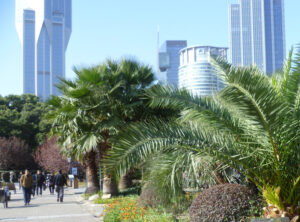The Russian empire, environment and empire, landscape & environmental change, visual culture & representation, political ecology and capitalism with Associate Professor Jennifer Keating, School of History.
Image above: S. M. Prokudin-Gorskii, ‘Group of workers harvesting tea’ (c. 1905-1915), Chavki, Georgia, LC-DIG-prokc-21522.

Associate Prof Jennifer Keating
UCD School of History
UCD Profile
Q: The first question is about the academic path you took to where you are now. What did you study? Did you always know you wanted to be a historian?
A: It’s a good question but I think I have a very disappointing answer! I definitely didn’t always want to be a historian – I didn’t really enjoy History that much at school. For me, it was studying History and Russian as an undergraduate in England, the act of studying History with a language, where something clicked for me. I think then, for the first time, I really saw History as an academic field and as something different from the traditional, narrative, empirical history that we were often taught at school.
I spent a year abroad in Russia as part of my undergraduate degree. I was in Moscow for most of it and did a lot of travelling across the country. That opened up new horizons, and I began to see that I could use History and the Russian language together to really understand the culture and past of a country. That carried me into MA and PhD study. Even then, I wasn’t really sure whether I wanted to be a historian, but at each stage, it was increasingly obvious to me that History wasn’t just about putting dates in a line. History is a tool of critical analysis. I’m interested in understanding the relationships between things, not necessarily about what happened, but about why processes and events occur. The type of History that really began to draw me in actually shared quite a lot in common with other cognate fields like Anthropology, Archaeology, Sociology, which ask similar questions.
Things started to get more specific during my postgraduate work. When I started the PhD, I became very interested in questions around geographies of power, particularly in the Russian context: how the vast territory of the Russian Empire fitted together, how political structures worked or didn’t work, and what experiences of being in the Empire were like, depending on where you stood, particularly if you lived in so-called ‘peripheral’ regions. I worked on these ideas of space and territory, alongside visual culture and environment in Central Asia (the southern borderland of the Russian Empire), for the PhD. Initially, I was juggling all these different elements, but gradually, figured out that it was the environmental element that I was really interested in. That then led to my first book On Arid Ground: Political Ecologies of Empire in Russian Central Asia, which was published in 2022.
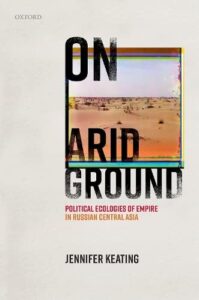
On Arid Ground: Political Ecologies of Empire in Russian Central Asia by Jennifer Keating (Oxford University Press, 2022)
That book focused in on the question of the role of the environment in the making and breaking of empire in the region. I found this question compelling, because more fundamentally to me, everything is political. Of course, not everyone agrees on this. But I was really interested to dig into how exactly environmental change was an integral part of the bigger practice of imperial power and also of resistance to imperial rule. In other words, environmental change was (and is) never some kind of passive byproduct, unrelated to political decisions, but an active constituent of how power is made, practiced, negotiated and undone.
Q: Is it a kind of two-way relationship?
A: Yes, in this reading, exactly: the environment can be a space in which political and economic power is produced, just like political and economic power has an obvious impact on the environment. I was delving into what exactly that relationship looked like in Central Asia. I’m still continuing to work on the Russian Empire and Central Asia in particular, but also increasingly thinking about how we situate these regions within the broader frame of global empires, and also within the frame of planetary history, where we consider human and non-human relationships across time in relation to the planet rather than being defined by specific national histories that sometimes can draw quite artificial boundaries, particularly when we’re thinking about the environment.
“While it might not be immediately obvious now, if we look at much of the span of early modern and modern history, empires rather than nation states have been the primary political structure. The nation state is actually a very modern construction […] For me, it’s absolutely essential that we study how empires functioned, how they grew and shrank and what people’s experiences of them were (and importantly, what their legacies are, in both human and environmental terms).”
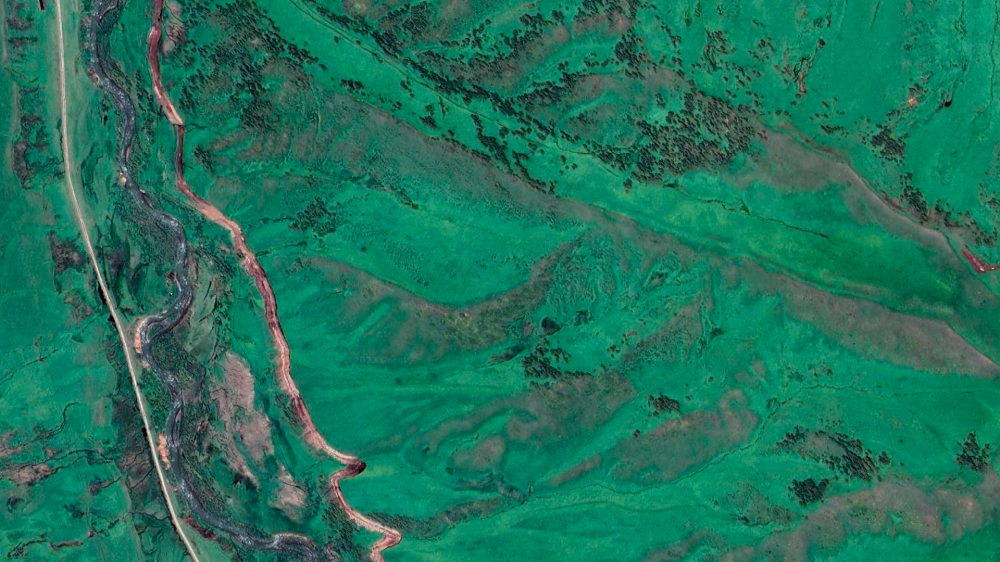
Q: Do you think the relationship between environment and empire is sufficiently understood or conceptualised?
A: While it might not be immediately obvious now, if we look at much of the span of early modern and modern history, empires rather than nation states have been the primary political structure. The nation state is actually a very modern construction. Obviously, the effects of empire are still felt today, even if we live in a purportedly post-colonial world. For me, it’s absolutely essential that we study how empires functioned, how they grew and shrank and what people’s experiences of them were (and importantly, what their legacies are, in both human and environmental terms).
There’s a huge amount of work on this, and absolutely brilliant work on empire, that doesn’t use an environmental frame. But in terms of my own interests, some of the most thought-provoking work is that which ties together histories of capital, environment and empire. In other words, all three are inherently connected, and we can’t understand one without understanding the others. Some scholars would suggest in fact that modern capitalism is born out of the expansion of empire. Of course, this expansion of empire was partly about the quest for land and commodities, which then began to unleash multiple new repertoires of land management, land degradation, the extraction of resources, new commodity flows, and so on.
One of the interesting elements is thinking about how these somehow abstract processes then impacted everyday people. Everyday experiences of dispossession, having your land taken away, new forms of labour, violence, marginalisation, all of these things that have been such a quintessential part of the imperial experience for colonised peoples were really bound up with quite simple but also very intricate questions related to the environment – who owned the land? Who used it and in what ways? Who regulated access to it? And what did this mean in terms of the development of ideas about political freedom, race, gender, mobility and labour?
We know a lot in terms of theorising or conceptualising these relationships and questions, but there’s a long way still to go. And particularly when we think about ‘empire’ as a general concept, there is the potential to lose a lot of the specificities of what made each empire different. If we think about the British, Russian and Qing empires, of course they were heterogenous. We have to keep working to really appreciate that. In terms of my work on the Russian Empire, even within one political territory there is such a huge amount of variety: the empire worked very differently depending on whether you lived in Central Asia or in Finland, to take a couple of examples. Yet at the same time, both were obviously constituent elements of the same imperial polity.
This is part of the impetus of the ERC project, to move away from a tendency (which I’ve engaged in myself) to look at specific regions of empire, and instead to try to think about a much bigger kind of multi-scalar history. On a practical level, this is a challenging thing to do, not least because it involves knowledge of multiple languages, familiarity with many different geographical environments, national histories, and a different take on place-based histories, which are often rooted in a single kind of environment (for instance, forest, desert or steppe).

Q: When I spoke to Dr Hannah Boast who was previously in the School of English, Drama and Film, one of the things she talked was how large infrastructural projects like dams are often part of nation building and she quoted Professor Rob Nixon who calls these projects in postcolonial states a kind of ‘national performance art’. Do empires also undertake these kind of symbolic, grand infrastructural projects, to master nature? Was this the case with the Russian Empire?
A: It’s a great example of how exploring questions surrounding environmental change involves thinking physically and also discursively. Obviously, infrastructure like dams was incredibly useful from the state perspective, in physical terms, in generating employment and power. In tandem with this, the claims that these construction projects allowed states to make were also an integral part of why they were so appealing – they allowed states to perform their modern credentials, to metaphorically as well as literally ‘master’ nature, and to galvanise public opinion.
The 1930s to the 1960s was in some ways the ‘high age’ of dam building globally. As you said, it’s not solely the domain of empires, and often many newly independent nation states begin dam building in this period too. We see this in India in the years following independence, where up to a fifth of annual state expenditure was spent on dam building projects. In fact, there is a lot of very interesting work around dam building that has highlighted the multi-faceted impacts of these projects beyond the obvious issues of employment and energy, including the flooding and salinisation of land, impacts on fisheries, health outcomes, and the rise of waterborne diseases.
In terms of the Russian Empire, there was some limited dam building in the years prior to 1917. In the period that I work on, in fact the largest hydroelectric dam in the whole Empire was built in Central Asia. Allied to this, there were numerous plans in the late nineteenth century to divert rivers – again, mastering nature, turning it to man’s will – as well as constructing grandiose irrigation projects in Kazakhstan, Kyrgyzstan and Uzbekistan in particular. But what’s interesting is that the state didn’t really have the capacity to actually enact these things. Often, in the Central Asian and the Siberian cases, it’s only later in the Soviet decades that many of these plans were then implemented or attempted. It’s a very striking point of continuity between the tsarist and Soviet eras. Back to the nineteenth century, in the Russian imperial context, when we think about infrastructure it’s often more connective infrastructures rather than dams that were of prime importance: canals, the telegraph network, railway lines, and these things have a whole host of environmental, economic, social and political implications. The railway in particular was instrumental in binding this enormous Eurasian territory together, and of course opened landscapes to new and more intense forms of exploitation.

“Representations of land, resources, animals, have been really central in past and present, in terms of environmental imaginations. Ideas of abundance or wildness, for instance, often precede getting to a place or using or exploiting a site, and visual material such as art, photographs or maps can be an integral part of how such ideas are communicated – and hence can be a gateway to recovering imaginations that were closely connected to physical action.”
Q: I saw that you were interested in visual culture, in terms of how aesthetic and visual materials are instrumentalised by empire. What kinds of materials did you look at?
A: I used a lot of visual culture in my PhD research. When we think about environmental issues, first and foremost we think about physical material ecologies. But representations of land, resources, animals, have been really central in past and present, in terms of environmental imaginations. Ideas of abundance or wildness, for instance, often precede getting to a place or using or exploiting a site, and visual material such as art, photographs or maps can be an integral part of how such ideas are communicated – and hence can be a gateway to recovering imaginations that were closely connected to physical action.
For historians, looking at images can be a very valuable way to access contemporary views of landscape that sometimes aren’t found in written sources. They are certainly very complementary to more traditional written archival materials. During my PhD I initially worked with a significant amount of colonial photographs. What was interesting was that some of these were reproduced in their hundreds of thousands, in pamphlets that were distributed to European settlers, who were being sponsored by the state to set up farms in Central Asia. And we have to bear in mind that the majority of the population at this point was illiterate, and so photographs had additional power and currency as carriers of ‘truth’. Images showed scenes such as people picking apples and tending their gardens, and in this sense are a fascinating mediator between reality and the imagination, because they encouraged people to migrate via this potent idea of abundance. Your life could be better in Central Asia, let’s say, than in your existing village in European Russia. Such materials then drove the physical transformation of landscape, because when migrants did arrive in their new homes east of the Urals, they tried to recreate the world that they saw on the page.
“The ‘high age’ of empire from the eighteenth to the twentieth centuries saw the imperial management, regulation and so called “improvement” of land at a scale and an intensity that the world had probably never seen before. Ultimately, the legacies of this are highly declensionist. We know that the imperial quest for land and resources, led in very general terms to cycles of deforestation, the spread of monocultures that are so damaging for local ecosystems, soil erosion, famine, and so on.”
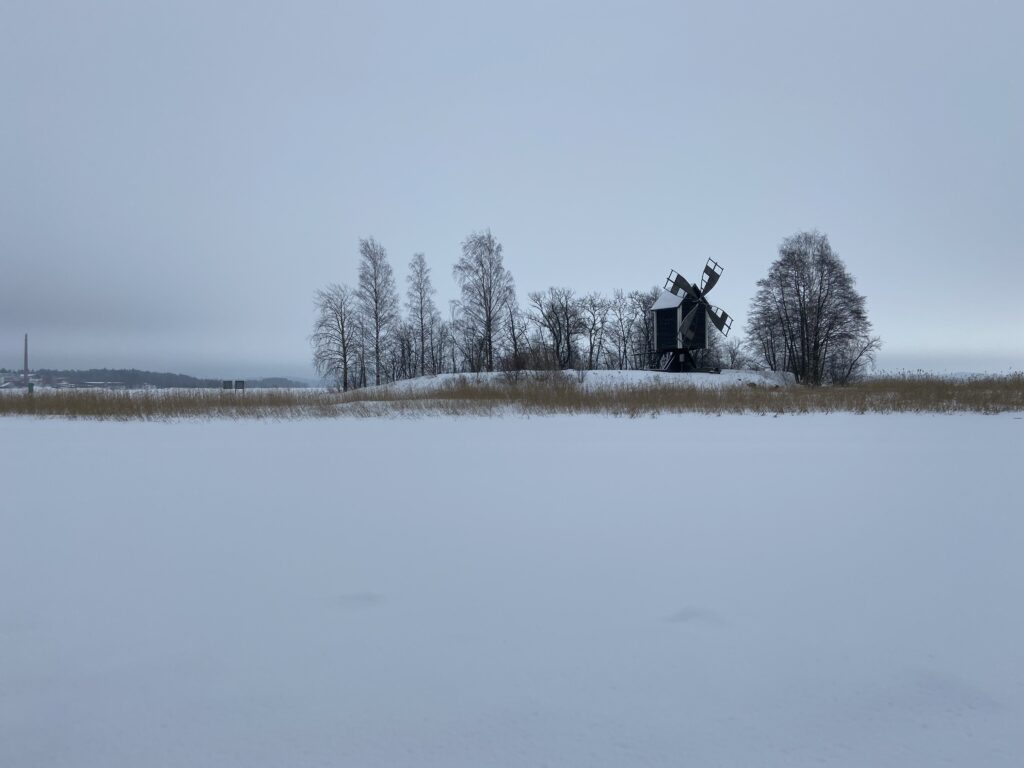
Q: What do you think are some of the legacies of empire in terms of the environment and landscape?
A: This is a huge question. In terms of legacies, to some extent, we’re still finding out – which is why the practice of history is so important to all kinds of environmental research: it’s about time. We need to measure how places landscapes, processes varied across time, whether that is years, decades or centuries, in order to understand patterns of ecological change at a range of scales from local to global. Empire, for good reason, gets a bad rap, environmentally. The ‘high age’ of empire from the eighteenth to the twentieth centuries saw the imperial management, regulation and so called “improvement” of land at a scale and an intensity that the world had probably never seen before. Ultimately, the legacies of this are highly declensionist. We know that the imperial quest for land and resources, led in very general terms to cycles of deforestation, the spread of monocultures that are so damaging for local ecosystems, soil erosion, famine, and so on. And quite often because these processes have a long or a delayed timeframe, we still see the impacts of this emerging today. Of course empire isn’t solely responsible for these things, but it has a considerable role to play, allied with the potent forces of capitalism and technological advancement.
Historians have approached this question in ways that aren’t solely declensionist. For example, colleagues working in the history of science have explored how earth and atmospheric sciences owe much to the development of empire and the spread of global exploration and observation. Other colleagues have investigated how forms of modern environmentalism have their roots in empire as well, such as laws to protect forests and to create nature reserves. I’m not so convinced that this is the same as the modern environmentalism that we see today, because very many of these colonial laws were, for instance, intended to prevent local communities from accessing forests, or, to create nature reserves for private hunting. In fact, these are excellent examples of the close relationship between environmental governance and colonial power hierarchies.
Q: Tell us a bit about your new European Research Council project and some of the motivations behind it.
A: The project is called Land Limits: it aims to explore a connected history of population, environment, capital, and conflict across northern Eurasia (the territory of what was the Russian Empire and today is many different nation states), focusing on the period from the 1860s until the 1920s. One of the elements that I’m particularly excited about is that we will be looking across multiple parts of this vast territory, and very different types of environment from sub-arctic to desert and the sub-tropics. A good amount of environmental history is framed, understandably, around a single environment, but given the practical scope of this project, we’ll be able to combine detailed studies of highly varied landscapes and communities.
Fundamentally, the project asks about the relationship between population growth, population pressure, and the environment. What does it mean for land use patterns, for food production, for irrigation, mining, enclosure and deforestation, when local populations climb rapidly, or when populations are very densely settled on the land? Having established the various types of environmental change that were happening across northern Eurasia in the late nineteenth and early twentieth century, we hope to then explore how these ecological developments affected society and politics, examining economic growth, innovations in land-use practices, the circulation of technical knowledge, and potentially, the emergence or amplification of tensions and conflicts between individuals, communities, and the state. The latter might potentially happen when access to resources became contested, or when the resources themselves became limited as a result of population growth.
Ultimately, the aim is to see whether this nexus of population growth and environmental change fits back into the bigger arc of the history of the late Russian Empire and the early Soviet state. I’m certainly not suggesting that the environment has a direct causal role, that it alone explains everything, but rather that we need to be ecologically literate when we think about these bigger questions of economic growth, state building and state collapse in northern Eurasia.
Q: It seems that you draw on lots of different disciplines in your work, such as geography, ecology, cultural studies, political ecology and so on. Would you call your work interdisciplinary?
A: I would say that my work has leanings into interdisciplinarity. It’s certainly something I’d like to work on more. I’m definitely of the view that academic silos are quite artificial: there’s such a lot to be learned by looking outwards, across disciplines. This is one of the factors that drew me initially into environmental history, which has always been located at the intersection of different fields. While we may be looking at the past, we ask very similar questions to earth scientists, geographers, and political ecologists. I do try to read as widely as I can, although I’m not sure that makes me an interdisciplinary scholar. Anthropology in particular is tremendously thought-provoking. Somebody like Professor Anna Tsing, for instance, has been thinking about global connections between people, things and markets in a way that’s really compelling to me as a historian. The best ideas are often the products of multiple different inspirational pathways
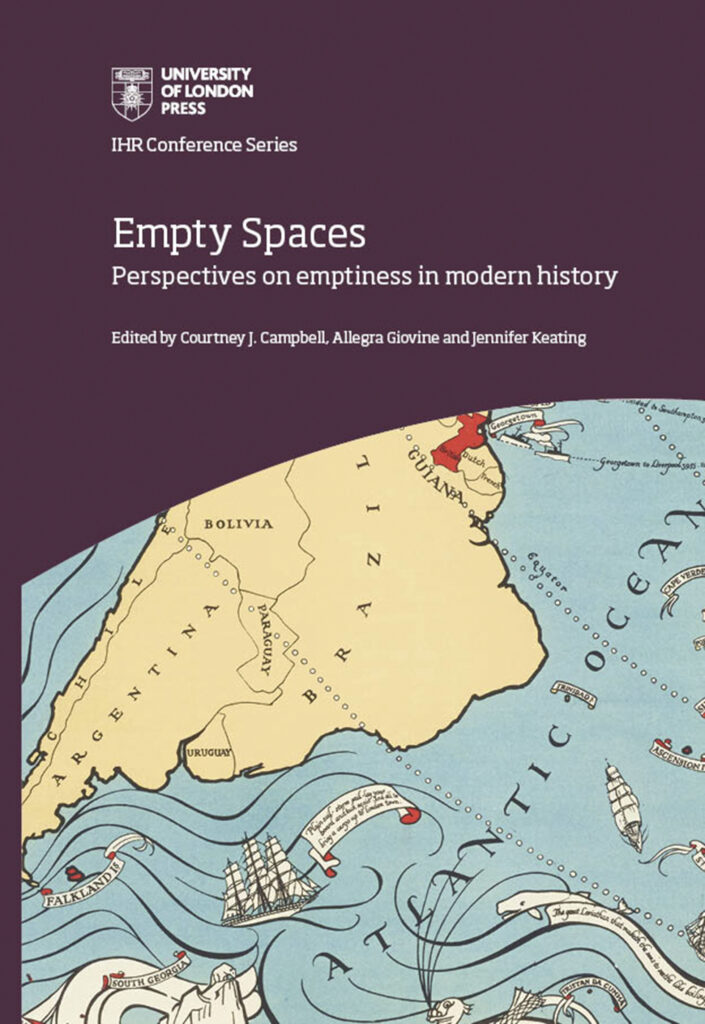
Empty Spaces: perspectives on emptiness in modern history
Edited by Courtney J. Campbell, Allegra Giovine, and Jennifer Keating (University of London Press, 2019).
Q: You co-edited a book called Empty Spaces: perspectives on emptiness in modern history – tell us a little bit about the concept behind it, how it came to be, and what kind of content was involved?
A: This was a fun project! It came out of the period when I was a PhD student and then a Postdoctoral Fellow at the Institute of Historical Research in London. The IHR was (and is) host to such a lively community of early career historians, and I was lucky enough to be part of some fascinating collaborative conversations with other Postdocs there. The book itself emerged out of a conference, held at the IHR, and a series of follow-up workshops, with the final volume co-edited by me and my great colleagues Courtney Campbell and Allegra Giovine. At the time, Courtney was working on Brazil, I was working on Central Asia, Allegra was working on Myanmar. We bonded over our common interests in various global environments, and more specifically, our shared focus on questions of land use, empire and political power. We quickly noticed that in each of our three regions, the language of ‘emptiness’ was used a lot, particularly in the nineteenth, but also in the twentieth century, and thought that it would be very productive to bring a number of scholars together to conceptualise ‘emptiness’ as a category across a number of disciplines.

Q: Is this in terms of places being described as wasteland?
A: Yes, in my case, it was. For example, Russian imperial surveyors and administrators ventured into the deserts and arid landscapes of Central Asia and labelled them as ‘empty’ and ‘wasteland’. We collectively started talking about this, in part in relation to the huge and very influential body of literature that has looked at the production of space – Lefebvre, Foucault, Soja, to name but a few – and which has made such powerful arguments about how space is produced both physically and also discursively. We noticed however that comparatively little has been written about the production of emptiness: if space is something that is loaded with meaning, often people think that emptiness is the very absence of this. And so we thought it would be really productive to bring scholars together to think about why certain places have been labelled as ‘empty’, and importantly, to recognise that emptiness is not an objective, neutral description. Even space is not empty, and that is in some ways the original vacuum (it is full of things, including space junk).
In this sense, emptiness is about what is seen and what isn’t observed, and crucially, what work the label of ‘emptiness’ does when it is attached to a certain place or landscape. In the Central Asian context, and this is something that happens in many other imperial colonies as well, ‘emptiness’ was a description that facilitated the appropriation of land, its annexation and ‘improvement’. So, we brought a number of scholars from different backgrounds together with the aim of thinking in an interdisciplinary fashion to demonstrate the capacity for ‘emptiness studies’ to emerge. This included historians of empire, an art historian, an archaeologist, architectural historians, film studies scholars, all writing about various land-, sea- and air-scapes that had been tagged as being empty, and then diving in to explore what this meant in practice and what the repercussions of this labelling were.
Q: What would you say are some of the very active topics in environmental humanities, particularly in environmental history? How can we draw on some of these insights for contemporary environmental issues?
A: There are so many fields in the environmental humanities, ranging from history and philosophy, to art, literature and ecocriticism. To dwell briefly on just a few areas: there is a rich body of work across disciplines that focuses on connections between the environment and identity, race and gender. There’s continuing research on ecology and state power, both past and present, and exciting work on resources, extraction, waste, pollution and commodities – their production, their circulation, their materiality; things that we can track culturally and politically as well as scientifically. There’s great work on questions of ethics and values in environmental context, especially (but not exclusively) in the modern era as we continue to grapple with life in the Anthropocene.
Collectively, one of the very powerful contributions of the environmental humanities is to underscore that the environment, its making and unmaking, is always deeply entangled with society and social questions. To me, this field has so much energy right now, framed by the fact that the climate crisis is front and centre in politics and society right around the world. Academics obviously have a vital part to play in contributing to broader conversations, and thinking environmentally across time and place is something in which we are trained and skilled.
“History offers us hope and encouragement in dark times; evidence of momenets in the past when human societies have adapted and did find solutions. History as a critical practice also offers us careful reflections on specific places, communities, and identities, all of which can potentially be obscured by modelling. History, in other words, helps to make the planetary personal.”

The other part of your question about whether historical insights inform how we respond to contemporary common challenges is an important one. I’m not entirely convinced that understanding the past allows us to predict the future: we don’t live in cycles of time that we simply repeat again and again. The context here and now is specific and different from the context ten or one hundred years ago, and will be different from ten or one hundred years in the future. However, while it seems to me that However, while History doesn’t necessarily help us to predict the future, it does have a crucial role to play as we think about the current challenges, not least because as I mentioned earlier, questions of climate change, species loss and land degradation are fundamentally about time. These are processes that began hundreds of years ago, and we can’t fully understand what we face now unless we understand how these issues have developed and changed over time.
A number of environmental historians have written very compellingly on this – there are many examples but one that springs to mind is a fantastic roundtable discussion between Professors Katie Holmes, Andrea Gaynor and Ruth Morgan (‘Doing environmental history in urgent times’), who underscore how important History as a discipline is as we move ever further into the climate crisis. They offer a number of important interventions: firstly that History offers us hope and encouragement in dark times; evidence of moments in the past when human societies have adapted and did find solutions. History as a critical practice also offers us careful reflections on specific places, communities, and identities, all of which can potentially be obscured by modelling. History, in other words, helps to make the planetary personal. And this connects to a further insight, that there is fundamentally no justice without History: understanding the past helps us to keep in sight specific human actions in perpetrating ecological damage. There’s a danger sometimes that when we talk about big global processes such as climate change, our conversations become very de-personalised. History is a reminder of human agency and of the uneven impacts of how that agency is distributed.


